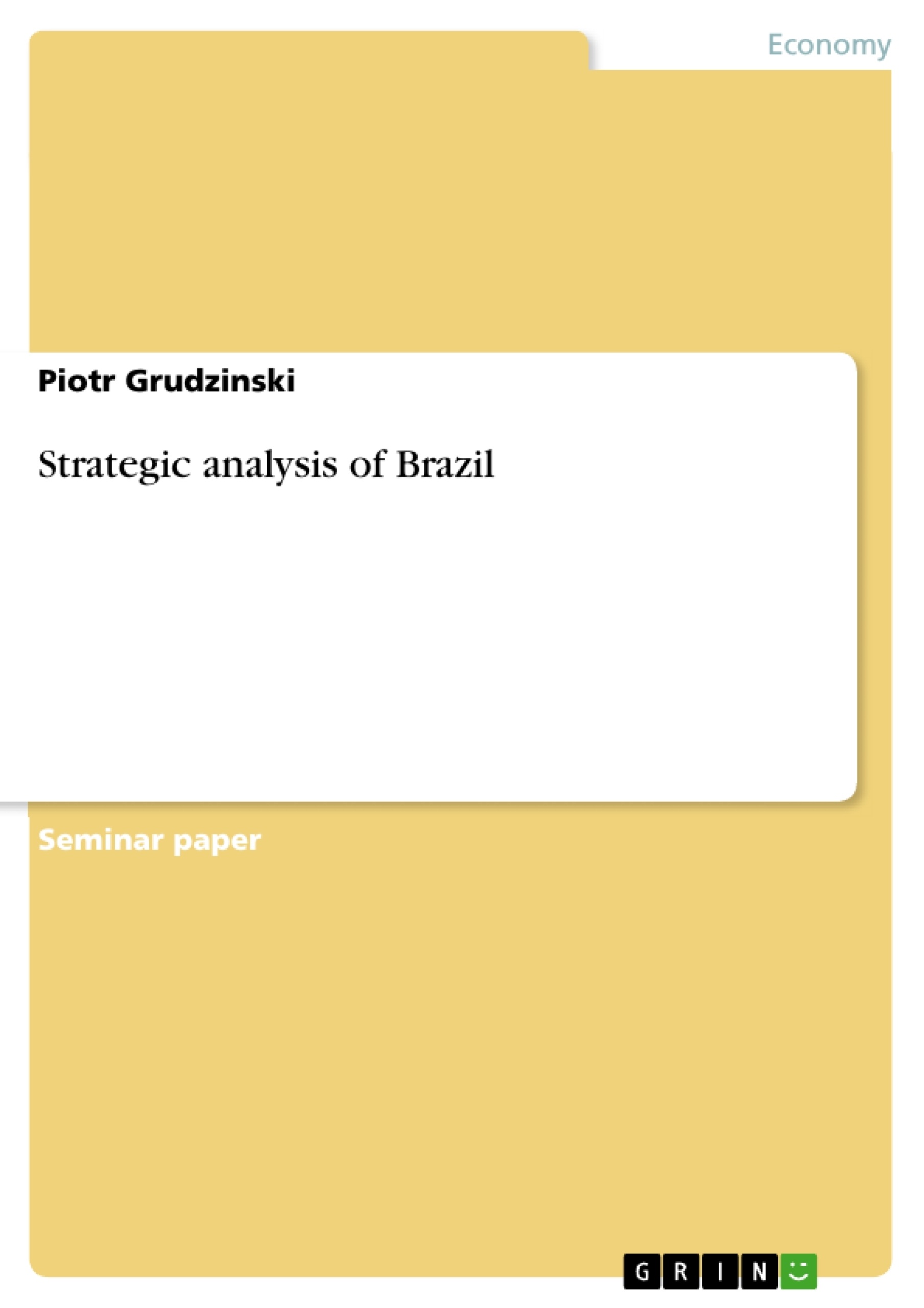Brazil is the biggest Latin American Nation with 177 million people. It is the one with most inequalities, but most would agree also with the biggest potential to become a continental leader and maybe a first reformist and innovator in the region. However no country can maintain sustainable development without diminishing economic and social problems. A main issue in most countries in Latin America, also in Brazil is poverty. Antipoverty efforts have increasing priority among socio-political objectives both internally (within governing bodies), as internationally within organizations involved in anti-poverty policies. As a consequence it has to be defined what is poverty, how to measure it? Income/Consumption Method has the widest use measure economic aspect. The other methods focus on social inequalities like: access to social institutions, social security, differences in social legitimacy and status, inequalities of freedom and social and political participation. It seems targeting poverty issue through reforms, deregulation, FDI may give Brazil a chance for a fast paced growth. The question arises what is the current situation in the country? What other factors influence the lingering “status quo”? Focus and Layout: A strategic analysis of the country Brazil is intended. Starting frommacroeconomic tendencies, key economic factorswill be discussed in comparison to the general development of these in the region. Presentation ofeconomic structureis intended. Deriving from the above, discussion aboutpovertyis intended. Here, both economic perspective (income inequality), as socio-political view is to be presented (socio-political inequality i.e. due to social exclusion and impossibility of certain populations to access key social services). Different poverty dimensions will be addressed. This paper will present a framework of aspects that make the poverty in Brazil a lingering, persevering state. Last but not least thepolitical assessmentandfuture viewon development of country will be shown.
Inhaltsverzeichnis (Table of Contents)
- Introduction
- Macroeconomic Tendencies in Latin America and in Brazil
- Economic Structure in Brazil
- Poverty Issue (economic and social aspect) and measuring methodologies
- Economic Poverty Indicators (narrow, direct measures)
- Case of Brazil
- Socio-Political Poverty Indicators (broad, indirect measures)
- Case of Brazil
- Economic Poverty Indicators (narrow, direct measures)
- Political Situation and Conclusions
Zielsetzung und Themenschwerpunkte (Objectives and Key Themes)
This paper provides a strategic analysis of Brazil, focusing on its economic and social conditions, particularly the poverty issue. The paper examines the macroeconomic trends in Latin America and Brazil, explores Brazil's economic structure, and analyzes the various dimensions of poverty, including income inequality and social exclusion. It further investigates the political situation and presents a future outlook on Brazil's development.
- Macroeconomic trends in Latin America and Brazil
- Economic structure and challenges in Brazil
- Poverty as a multifaceted issue: income inequality and social exclusion
- The impact of political factors on development
- Future prospects for Brazil's development
Zusammenfassung der Kapitel (Chapter Summaries)
The introductory chapter provides an overview of Brazil as the largest Latin American nation, highlighting its significant potential and the challenges posed by poverty. It introduces the various approaches to measuring poverty, including income/consumption methods and indicators that focus on social inequalities. The paper outlines its strategic focus on analyzing Brazil's macroeconomic tendencies, economic structure, and poverty issues, concluding with an assessment of the political situation and future perspectives.
The second chapter examines macroeconomic tendencies in Latin America and Brazil. It provides information on the GDP, income per capita, and inequality levels in Latin America. It then focuses on Brazil's GDP, growth rate, economic structure, and labor force composition. The chapter also discusses unemployment rates, poverty statistics, and Brazil's inflation, foreign debt, and public debt.
The third chapter delves into the economic structure of Brazil, highlighting the composition of its GDP and the challenges faced by the agricultural sector. It provides an analysis of Brazil's trade balance, emphasizing the export of raw materials and the import of manufactured goods.
The fourth chapter examines the complex issue of poverty in Brazil, analyzing both economic and socio-political dimensions. The chapter explores different poverty indicators, including income-based measures and indicators that focus on social exclusion and access to essential services. It delves into the challenges faced by specific populations in Brazil, providing a comprehensive understanding of the multifaceted nature of poverty.
Schlüsselwörter (Keywords)
The paper focuses on key topics like macroeconomic trends, economic structure, poverty, income inequality, social exclusion, political factors, and development prospects in Brazil. It utilizes concepts such as the Gini coefficient, GDP, poverty indicators, and social inclusion to analyze the current state and future challenges of Brazil's development.
- Quote paper
- Piotr Grudzinski (Author), 2006, Strategic analysis of Brazil, Munich, GRIN Verlag, https://www.grin.com/document/58967



